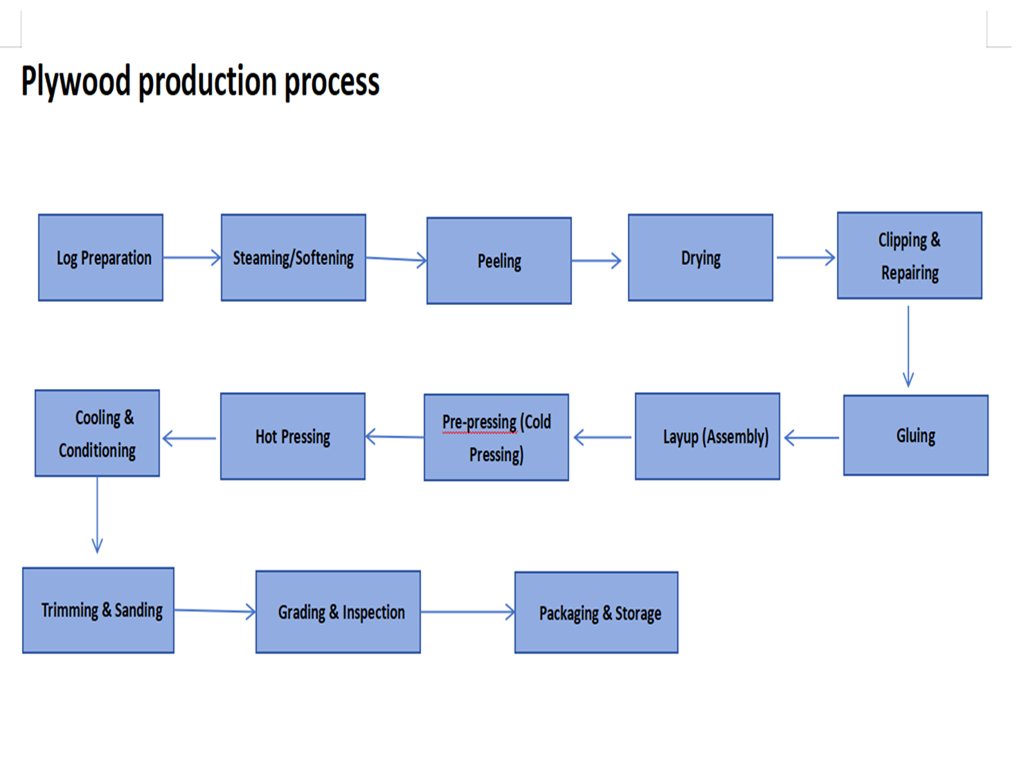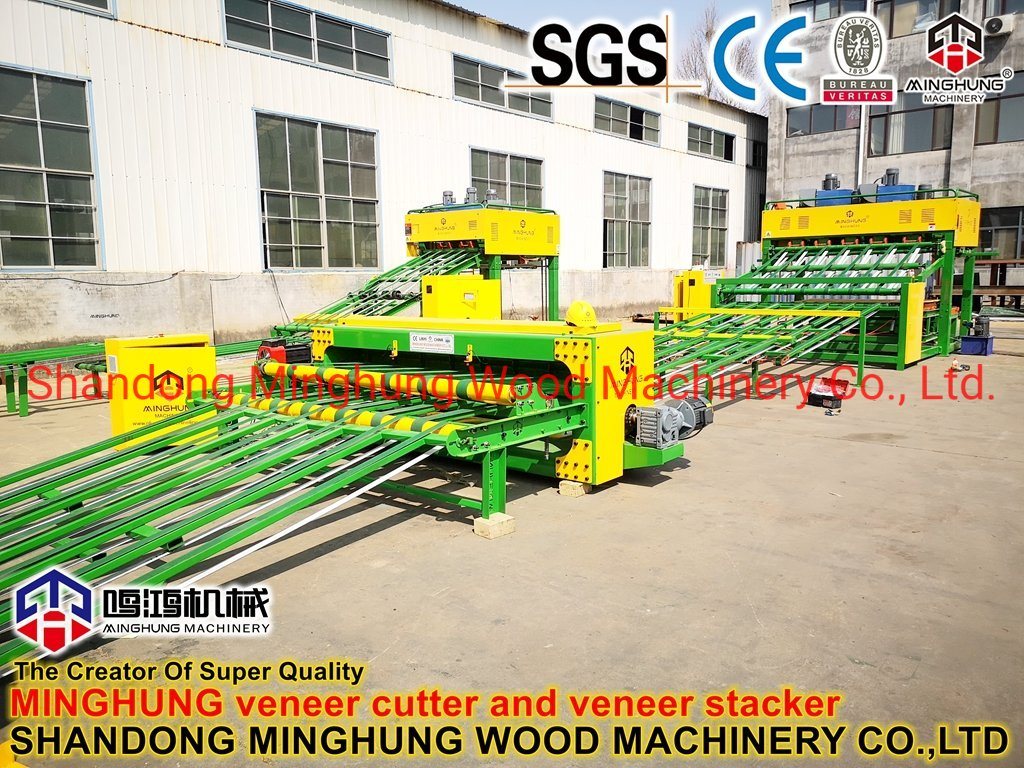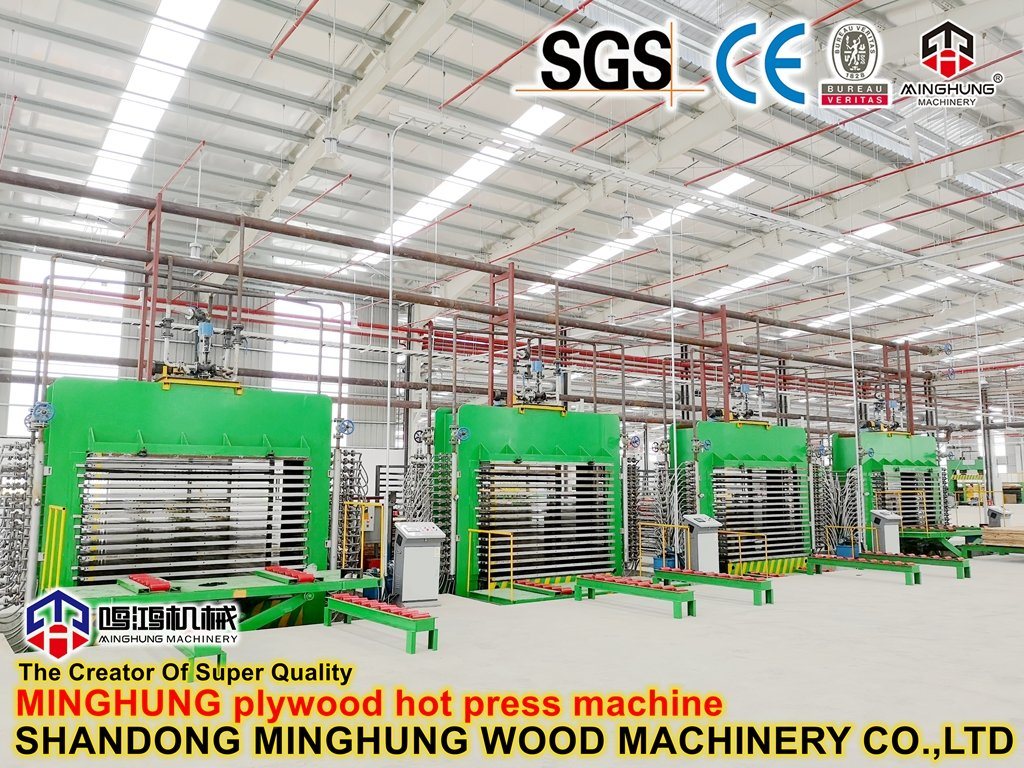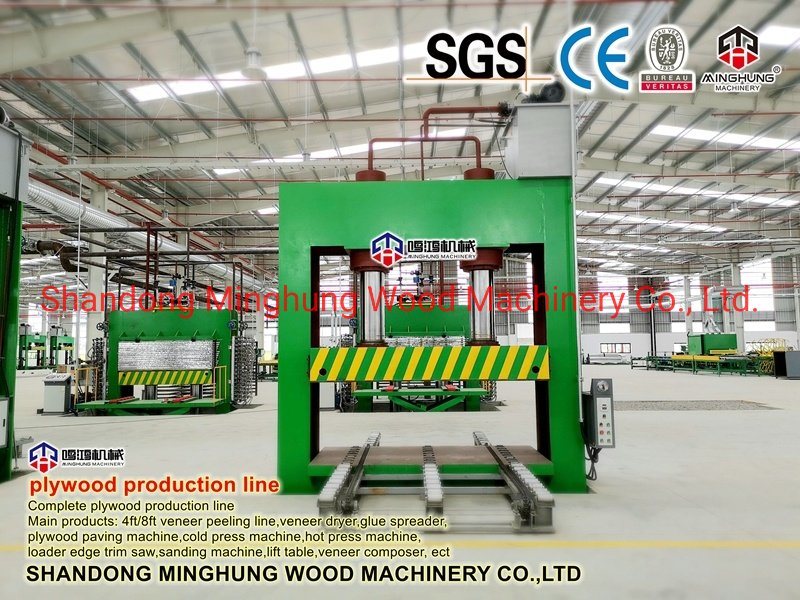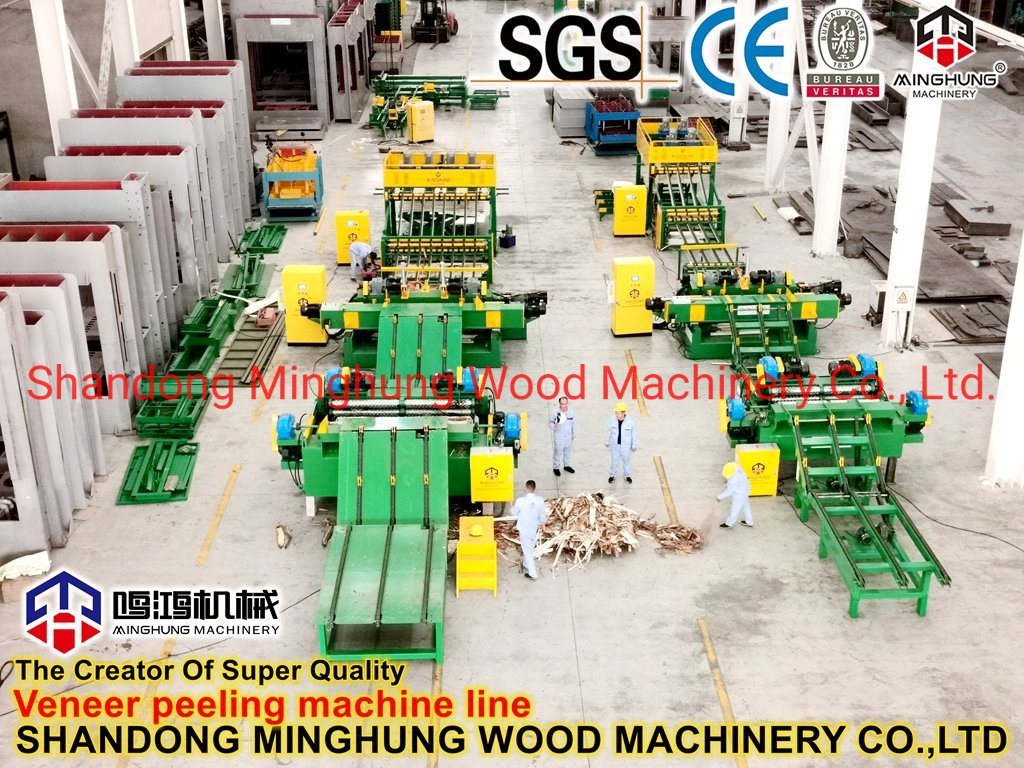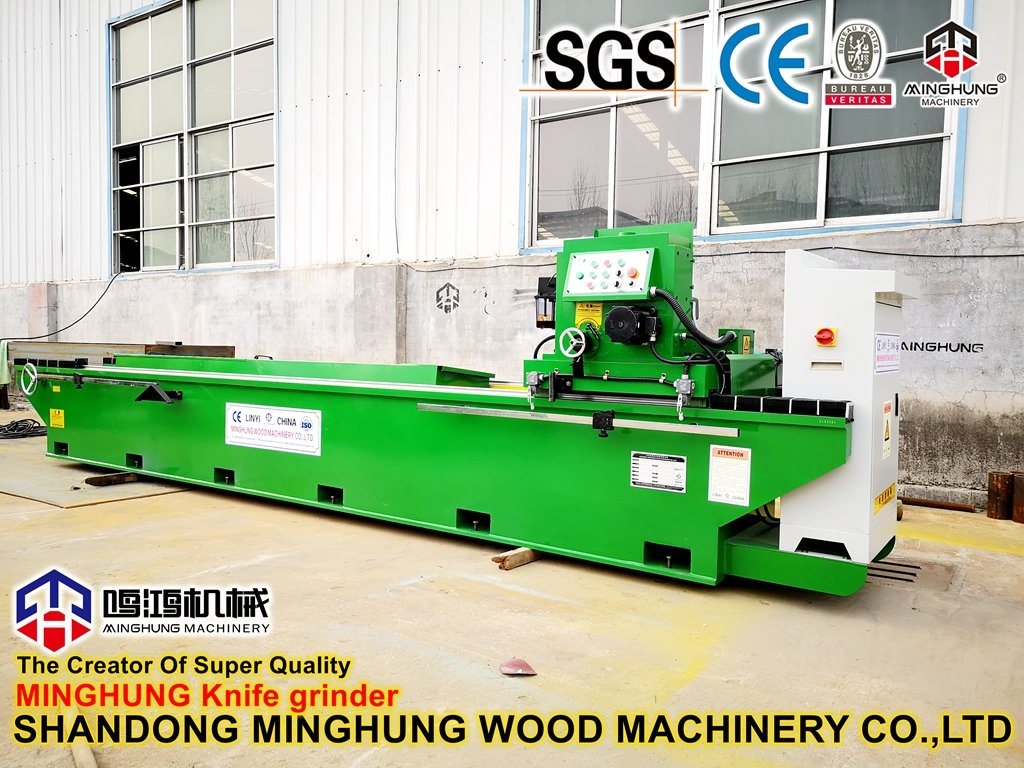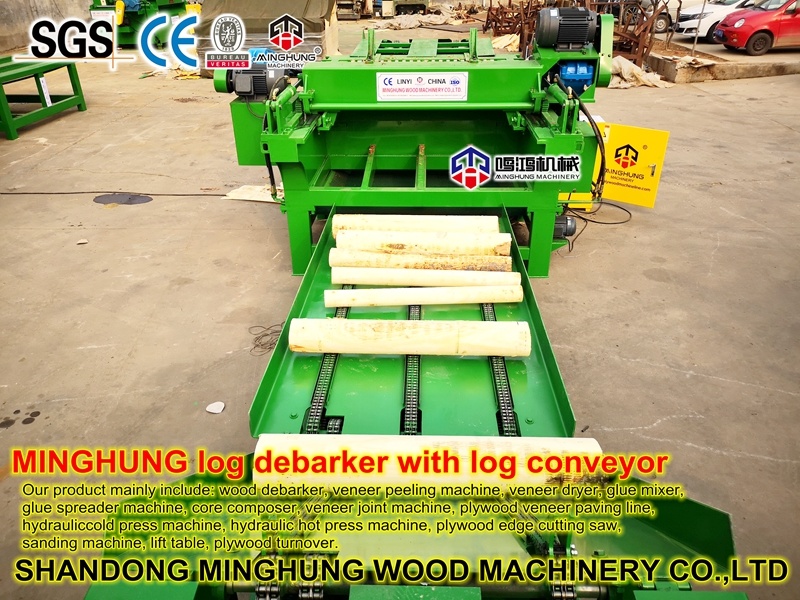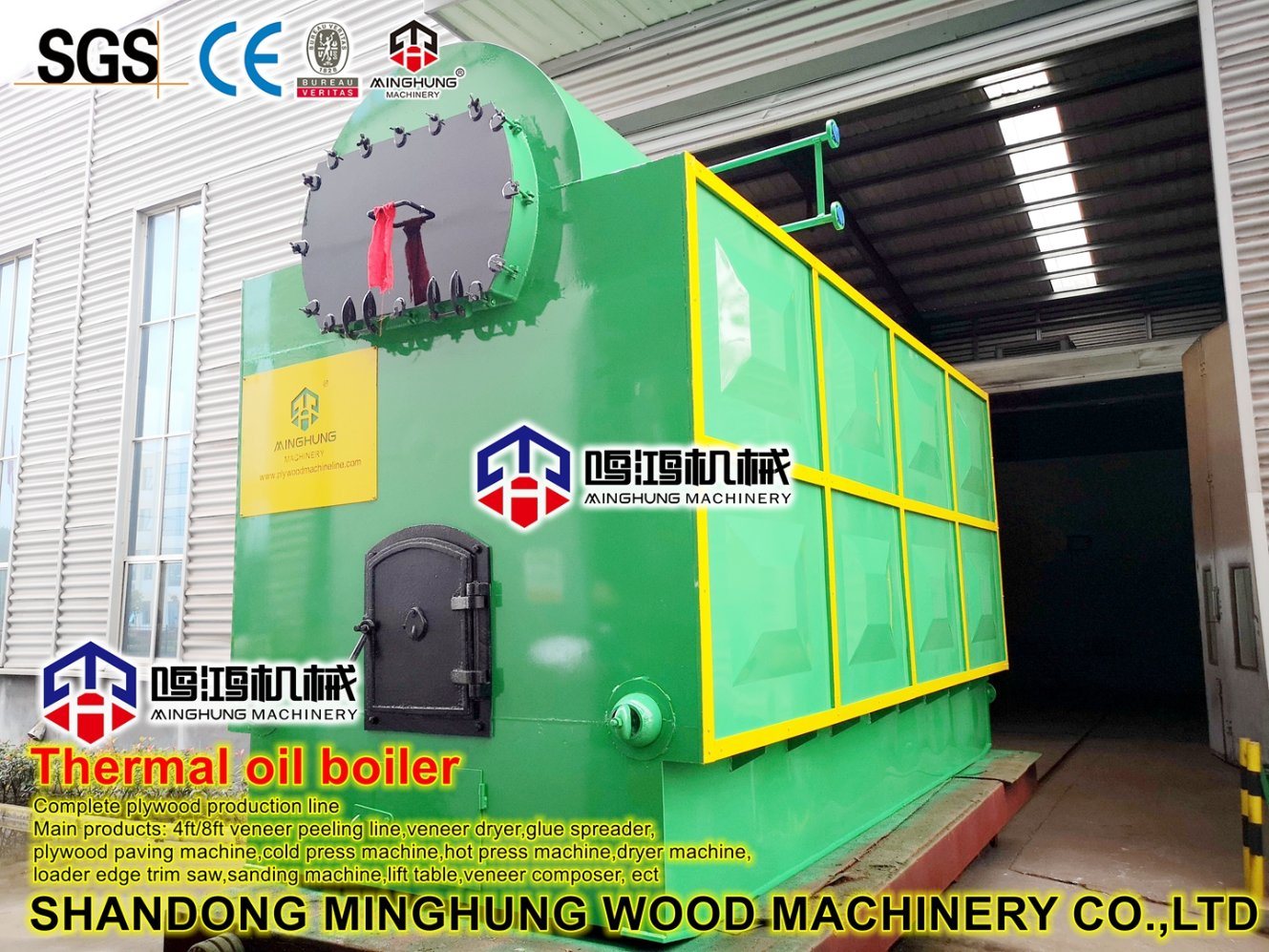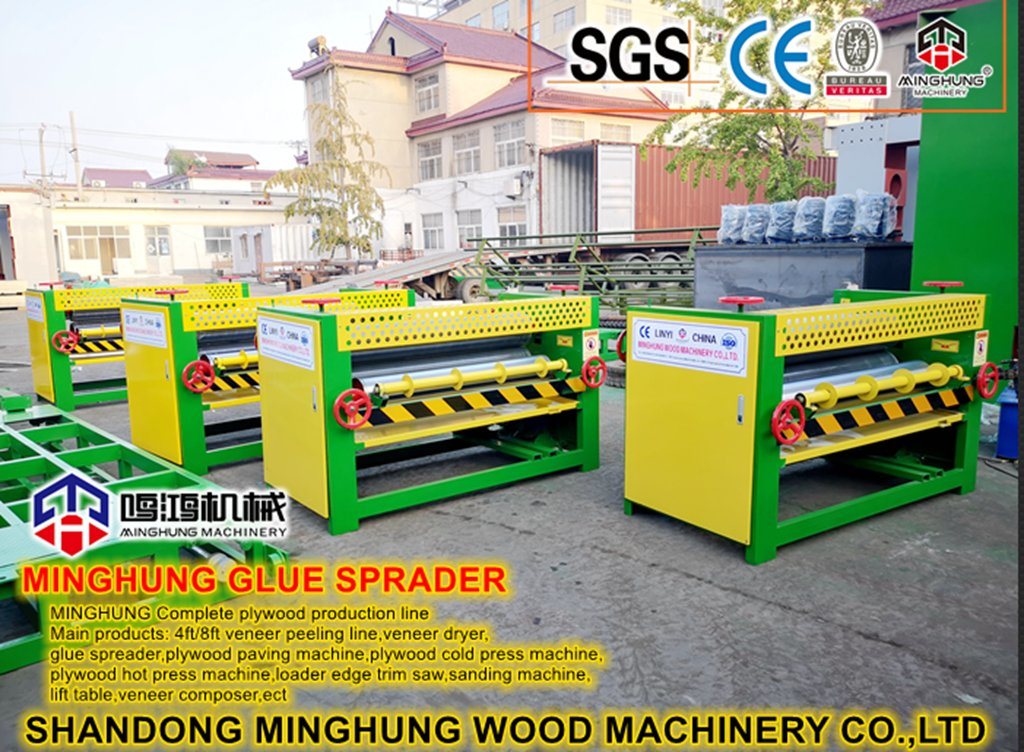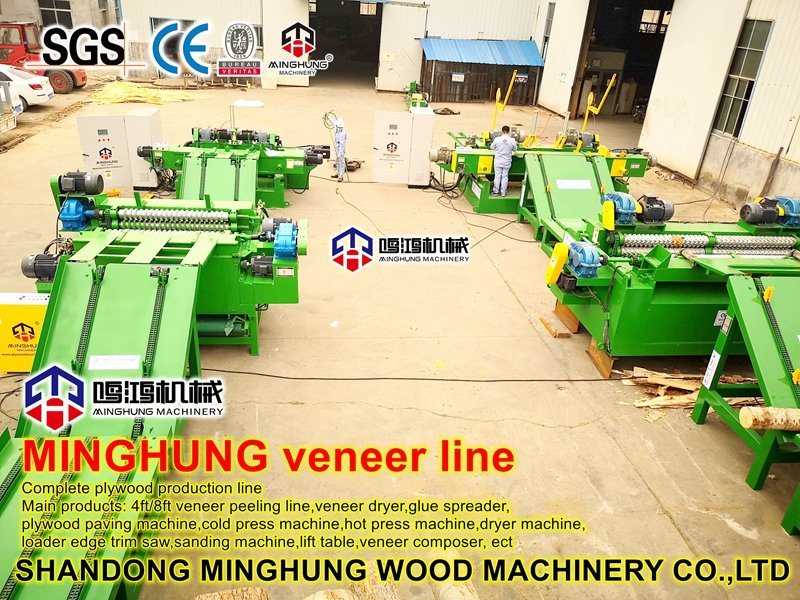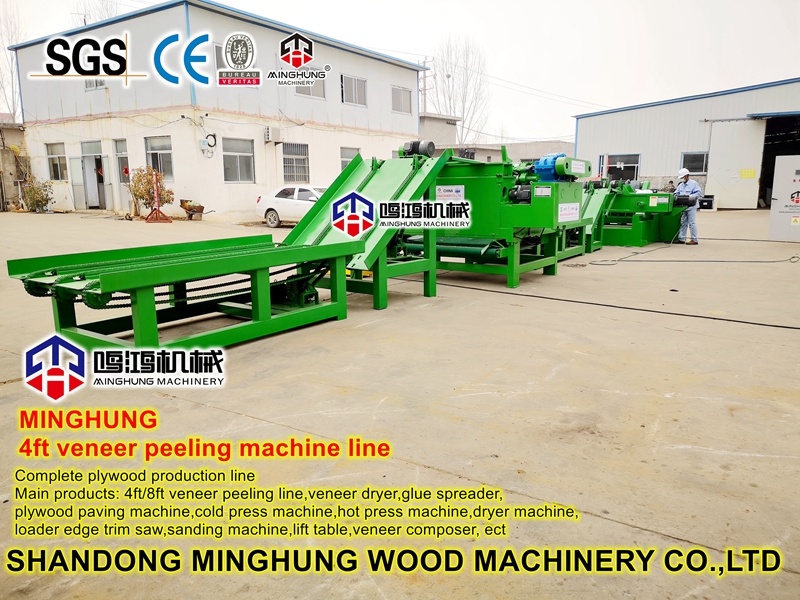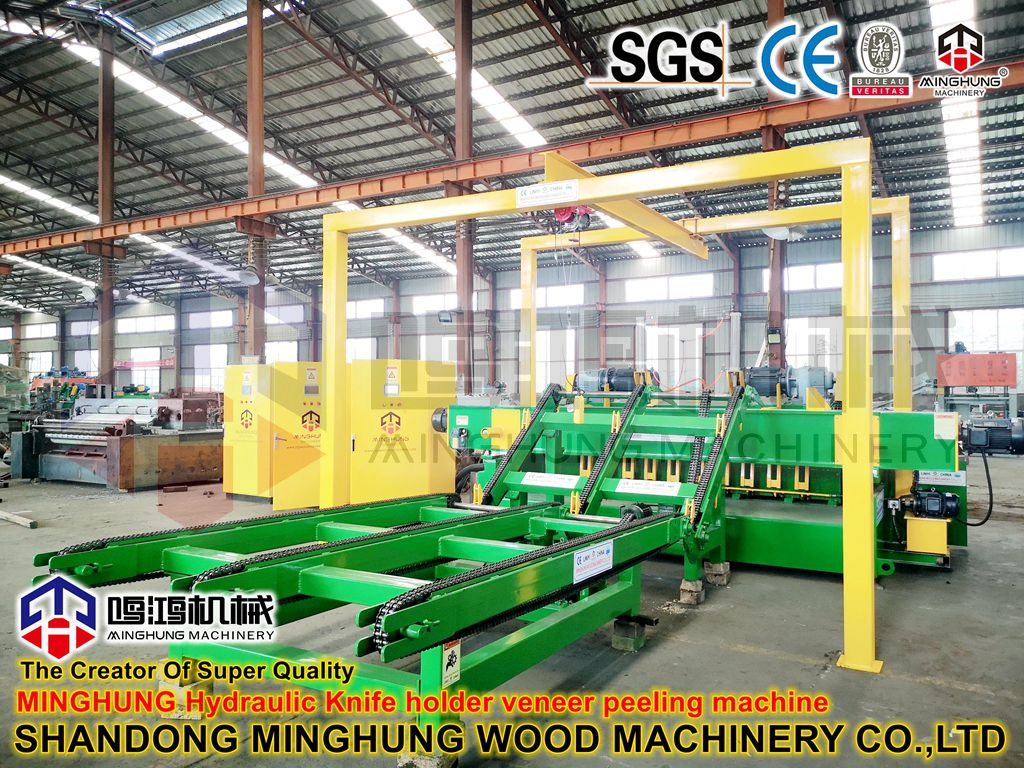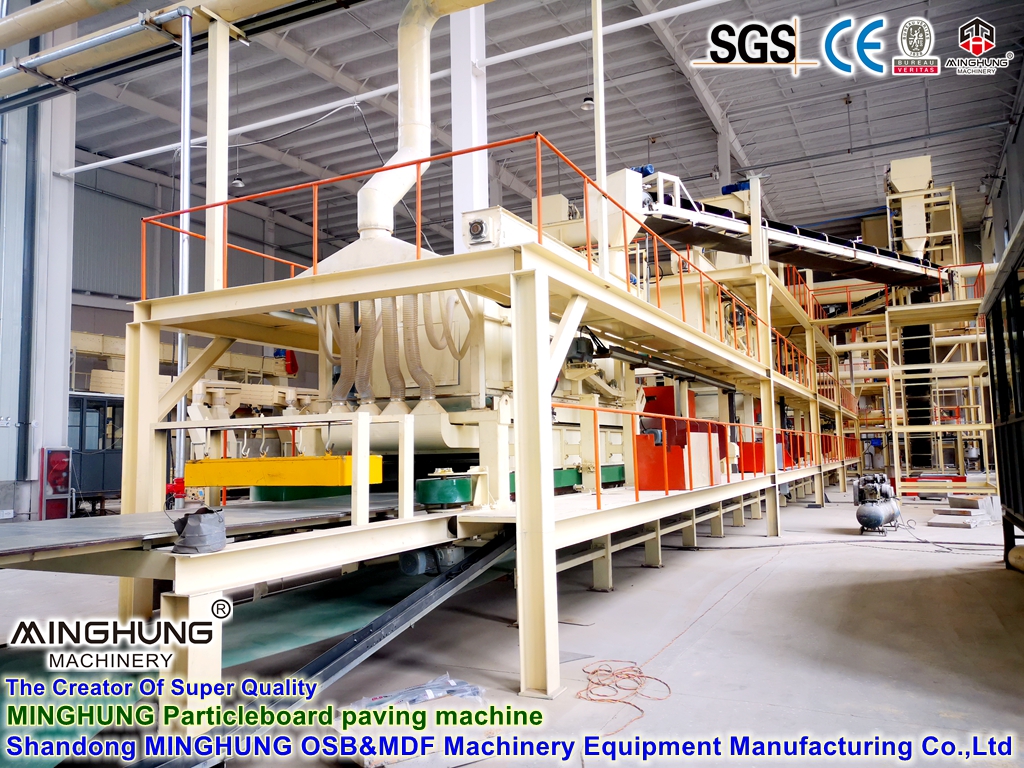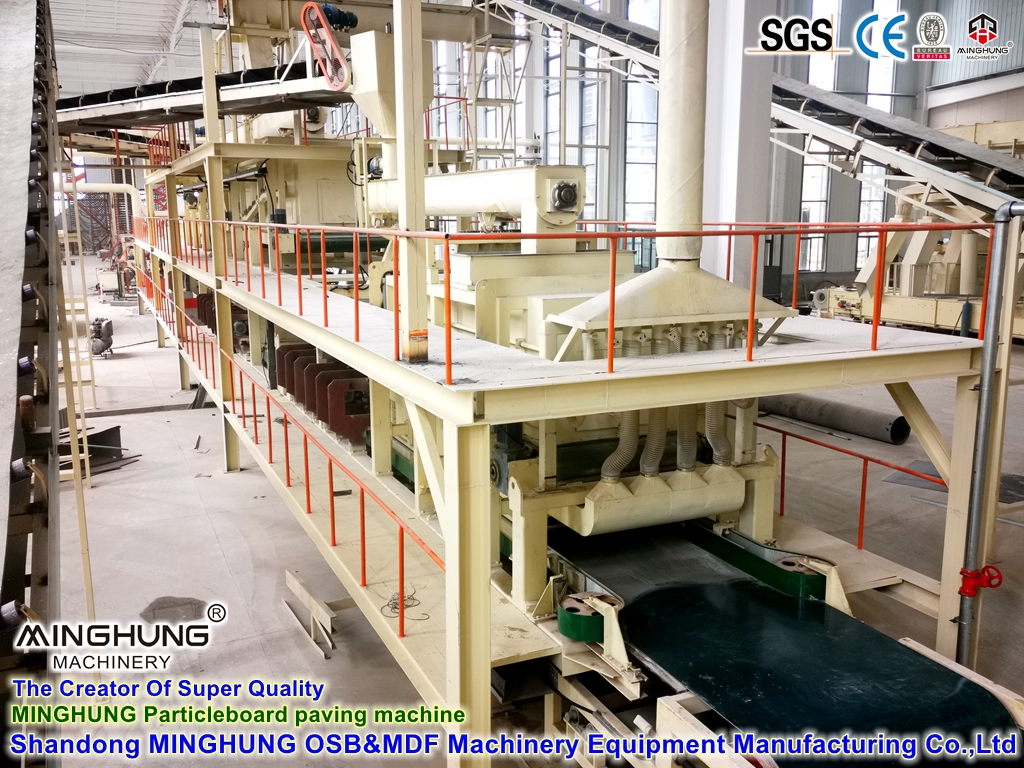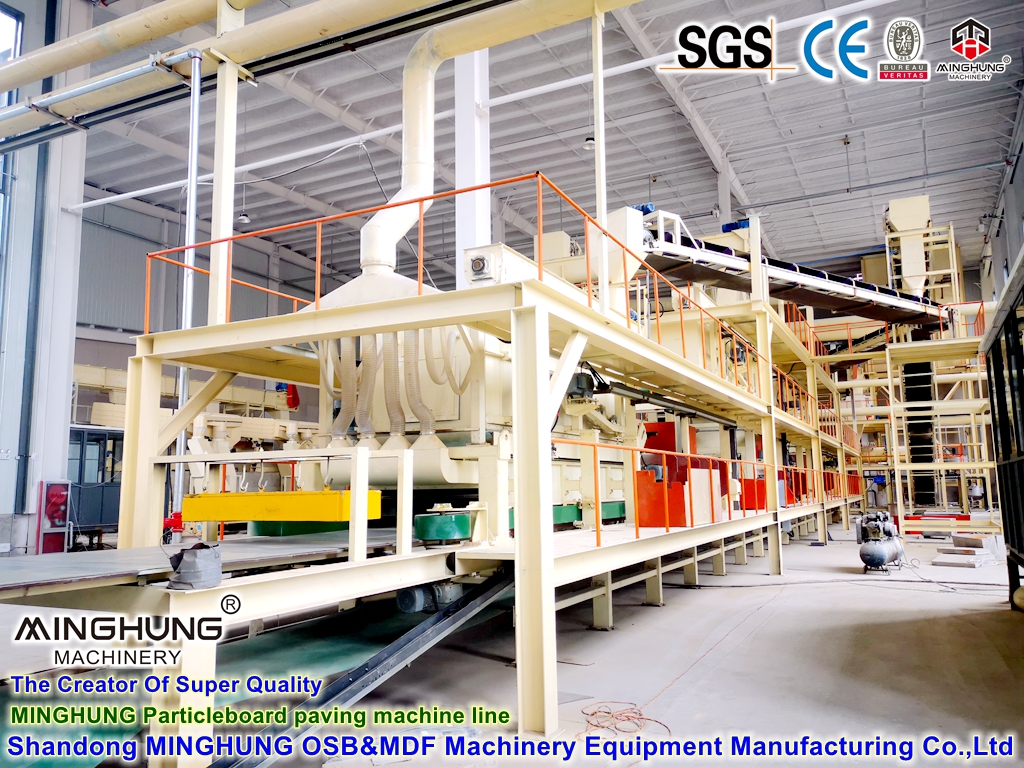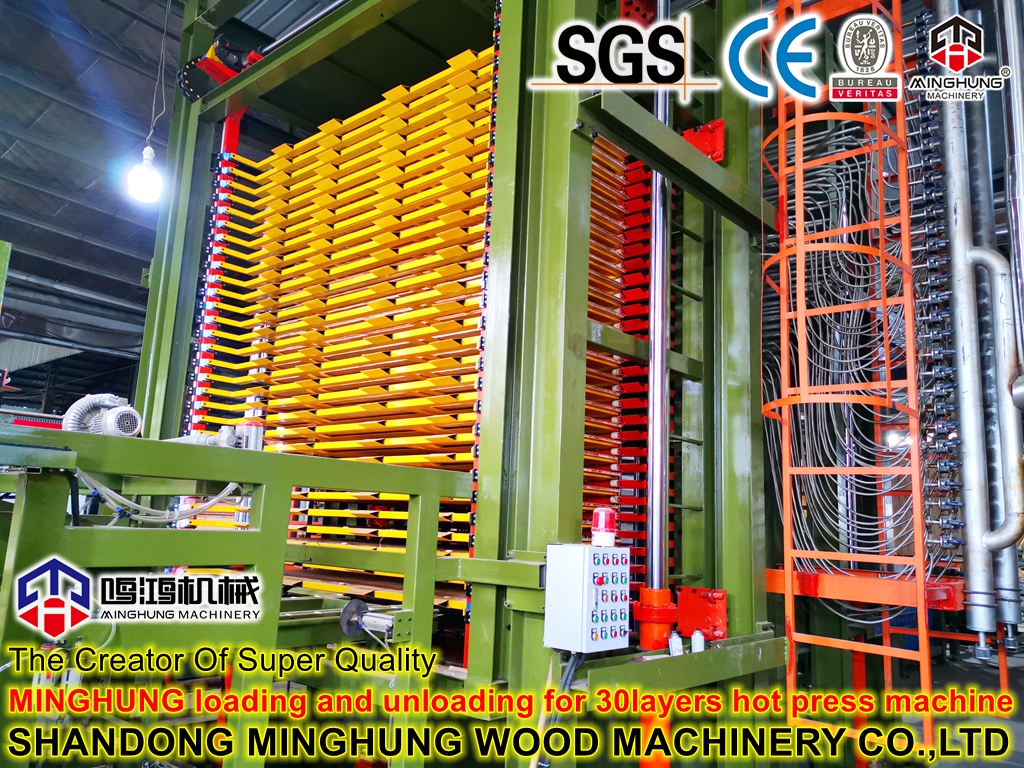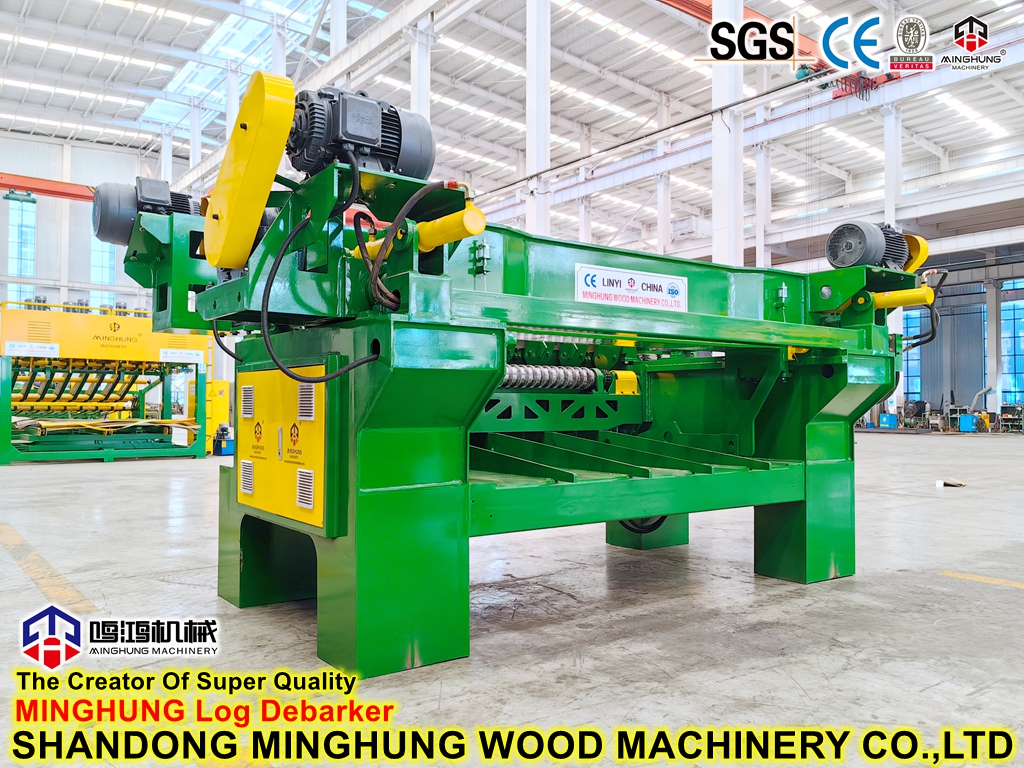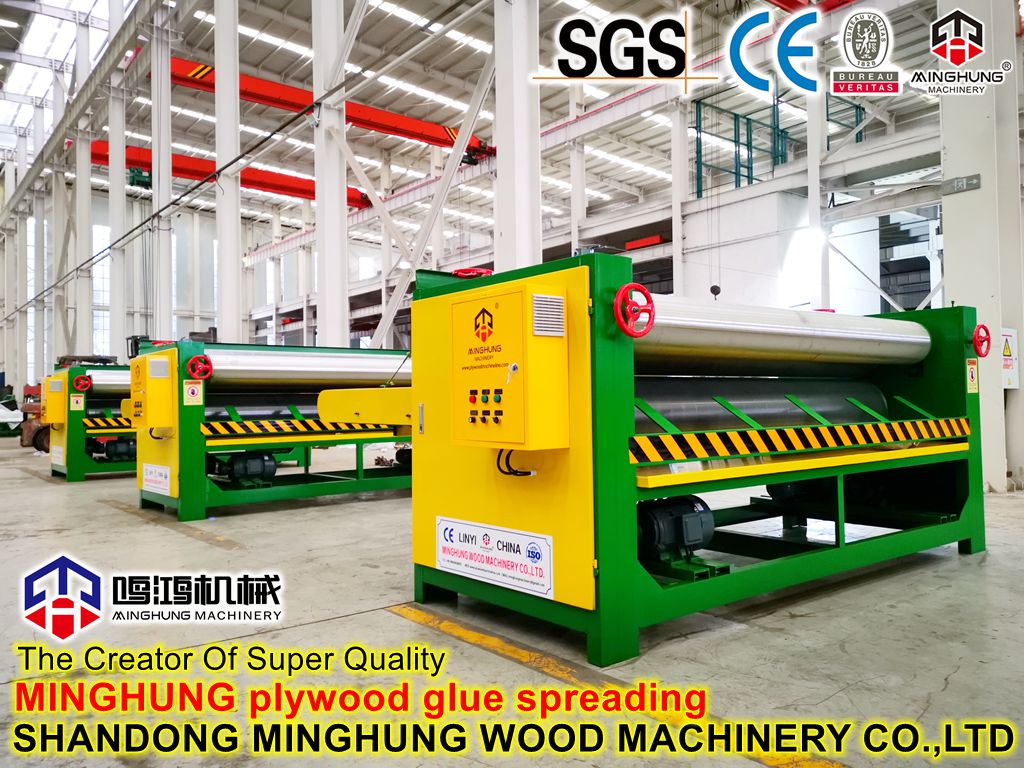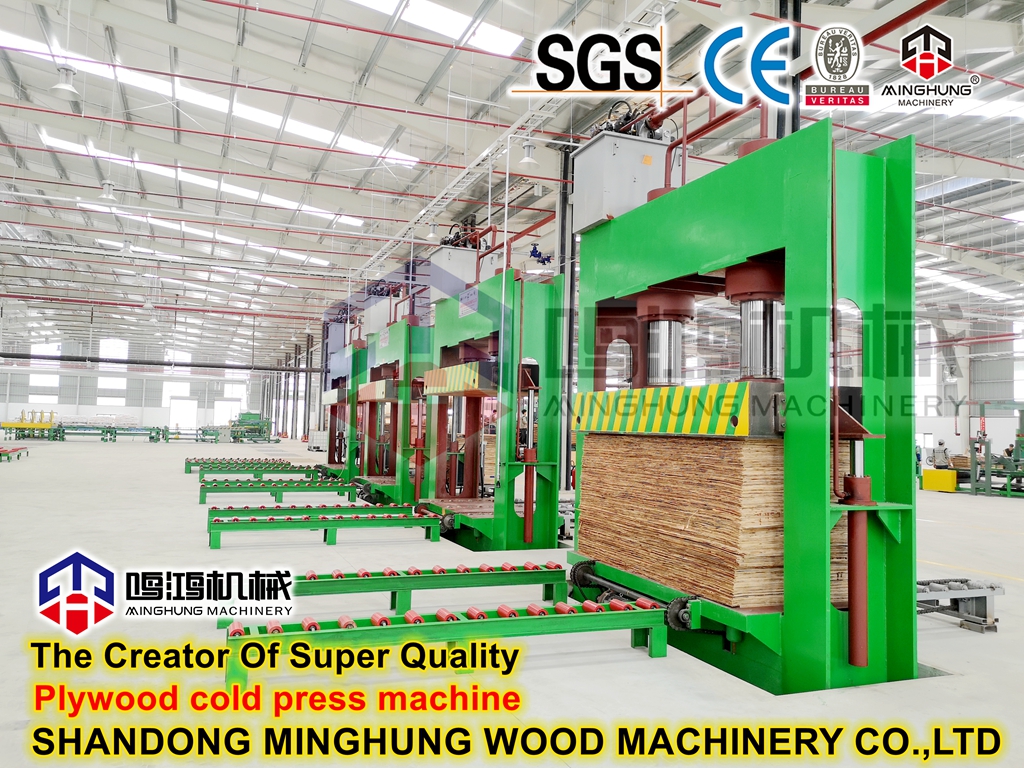The production line follows the standard plywood manufacturing process, comprising the following core sections:
1. Log Handling Section:
Cross-Cutting: A large circular saw is used to cut logs into segments of the required length.
Debarking: A mechanical debarker is employed to remove bark, preparing the log segments for peeling.
2. Peeling and Drying Section:
Peeling: The core equipment is a spindleless lathe, which peels the log segments into continuous veneer ribbons.
Clipping: The veneer ribbons are clipped into neat sheets according to preset dimensions.
Drying: A multi-layer mesh belt dryer or roller dryer is used to efficiently dry the wet veneer, reducing its moisture content to the suitable range of 8%-12%.
3. Gluing and Layup Section:
Gluing: A double-roll glue spreader is used to evenly apply urea-formaldehyde or phenol-formaldehyde resin adhesive to the veneer sheets.
Layup: Manual labor or a simple assembly line is used to stack the glued and unglued veneer sheets with their grains perpendicular to each other, forming a panel mat.
4. Cold and Hot Pressing Section:
Pre-pressing: Before hot pressing, a cold press is used to apply preliminary pressure to the panel mat, giving it initial shape for easier transportation and loading into the hot press.
Hot Pressing: This is the core process of the production line. A multi-opening hot press, heated electrically or by thermal oil, is used. Under precisely controlled temperature, pressure, and time, the adhesive is cured, firmly bonding the veneers into plywood.
5. Finishing Section:
Cooling and Curing: The pressed panels are allowed to cool naturally or are force-cooled, followed by a period of rest to release internal stresses and stabilize the panel shape.
Trimming: A cross-cutting and edge-trimming saw is used to cut the rough-edged panels into standard sizes.
Sanding: A wide-belt sander is used to sand the panel surfaces, ensuring uniform thickness and a smooth, flat finish.
